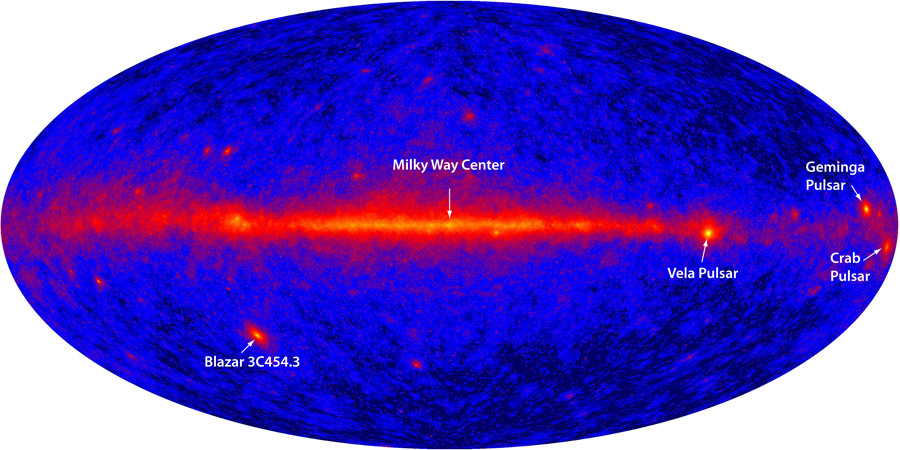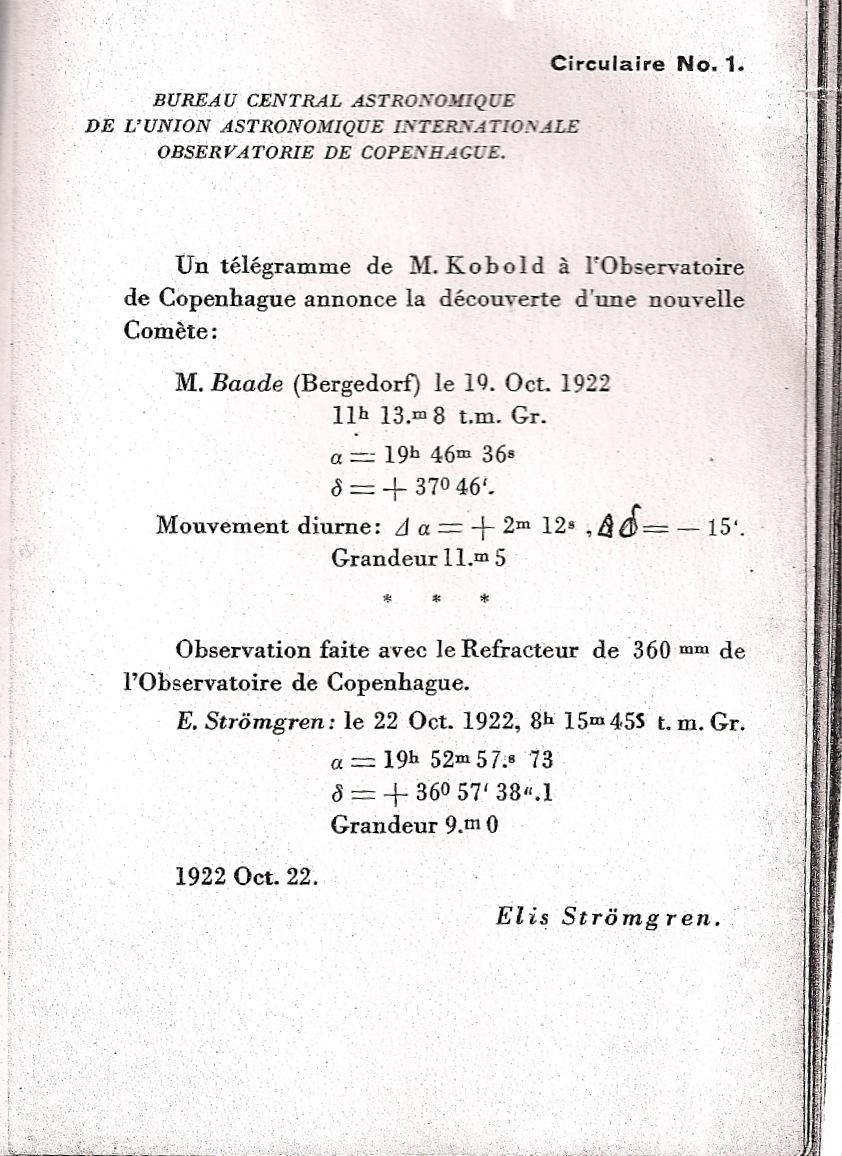
Fermi Gamma-ray Space Telescope's all-sky gamma map, with Blazar 3C 454.3 labeled in the lower left corner. (Image: NASA/DOE/International LAT collaboration.)
When it comes to watching the skies, two sets of eyes are always better than one, especially if one pair can see, say, radio waves, while the other has X-ray or even gamma-ray vision. The Fermi Gamma-ray Space Telescope's Large Area Telescope collaboration has recently released a paper giving the gamma-ray perspective on an astronomical object that flared last summer, an active galactic nucleus-or quasar-known as 3C 454.3. The paper, accepted by the Astrophysical Journal and posted yesterday on the ArXiv preprint archive, reveals that the structure of these distant, energetic monsters is more complex than scientists had previously guessed. The paper also hints at a more comprehensive picture to come, next time unfolding in full color, using data from radio, infrared, optical, X-ray, and gamma bands.
A quasar is thought to be fueled by an enormous swirl of gas, or accretion disk, that has gathered around a massive black hole at the center of a distant galaxy. As gas particles stream into the black hole's maw, protons and electrons near the black hole are propelled outward at close to light speeds in a jet perpendicular to the disk. When this jet outshines the surrounding galaxy, it's often called a blazar-perhaps one of nature's most powerful particle accelerators. In a process that's poorly understood, the jets quake and shudder, shaking the high-energy beams and causing them to radiate.
"We don't see the particles unless they produce some signature of their presence," said SLAC National Accelerator Laboratory astrophysicist Greg Madejski, who with Benoit Lott of France's National Institue of Nuclear and Particle Physics at Bordeaux, coordinated the work on the paper. "It's like peeling an onion-we look at the radiation and look at what produces the radiation, then that tells us about the content and structure of the jet."
In the summer of 2008, Blazar 3 C 454.3 flared violently, dazzling the Large Area Telescope, or LAT, with a gamma-ray blaze. Using data collected over the next month, astrophysicists uncovered unexpected complications in the gamma-ray portion of the blazar's radiation-corresponding to energies between 20 MeV and 300 GeV. So far, gamma-ray observations of blazars have indicated that the amount of radiation emitted decreases as its energy increases. This relationship seems to follow a power law, so that a gamma ray with twice the energy of another is about one fourth as common. The new LAT data show a break in the expected smooth downward decline, with a sudden drop in the amount of radiation at about 2 GeV.

Today's astronomical telegrams are the electronic descendents of physical telegrams like this 1922 circular of the International Astronomical Union heralding the observation of a new comet. (Image: the International Astronomical Union.)
The gamma-ray data allow astrophysicists to make important revisions to the prevailing picture of blazars. Meanwhile, multi-wavelength data promise even deeper insights. As their own telescope tracked the gamma rays, the LAT collaboration leapt to action, alerting astronomers all over the world to the flaring blazar. Their July 24 posting on the Web site The Astronomer's Telegram triggered an unplanned yet successful multi-wavelength campaign, securing observations in the radio, infrared, optical, ultraviolet and X-ray bands.
"This is really the only way to make any progress," Madejski said. "It turns out what we really want to find out is who flares first-is it the gamma rays and then the optical and infrared, or vice versa? This tells us what the 'prime mover' behind these flares might be."
For more than a century, astronomical news was sent from one observatory to another in Morse code, via miles of wire. Today's astronomers use online resources, such as the International Astronomical Union e-mails and The Astronomer's Telegram, to find the hottest things to watch. According to SLAC astrophysicist Jim Chiang, the LAT collaboration has posted more than 20 telegrams since January. As an all-sky monitor sensitive to gamma rays, the LAT is especially well-poised to launch broadband investigations of events like blazar flares, which are fleeting and tend to glow most brightly in the high-energy part of the spectrum.
"These guys will flare on a timescale of a few days, or they may stay hot. It's important to trigger these campaigns on a timely basis," Chiang said. "This is a new thing that we're able to do with the LAT."
"Understanding of Fermi data requires collaboration with astronomers and astrophysicists observing in other spectral bands," Madejski added. "If we invite them to look at unusual celestial phenomena, it will shed light on these enigmatic sources of extremely energetic radiation."
By Lauren Schenkman
This story first appeared in SLAC Today on April 30, 2009.






